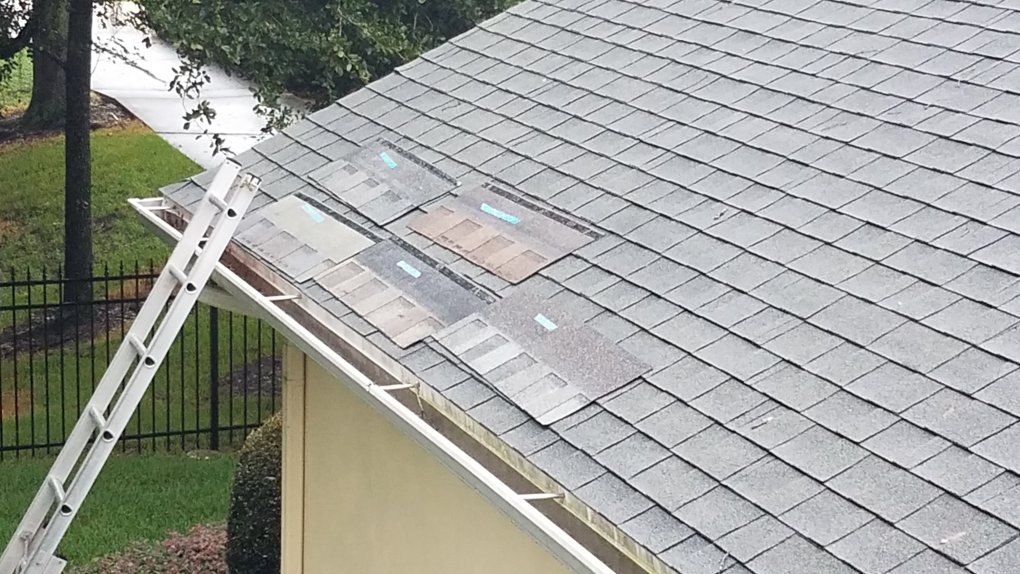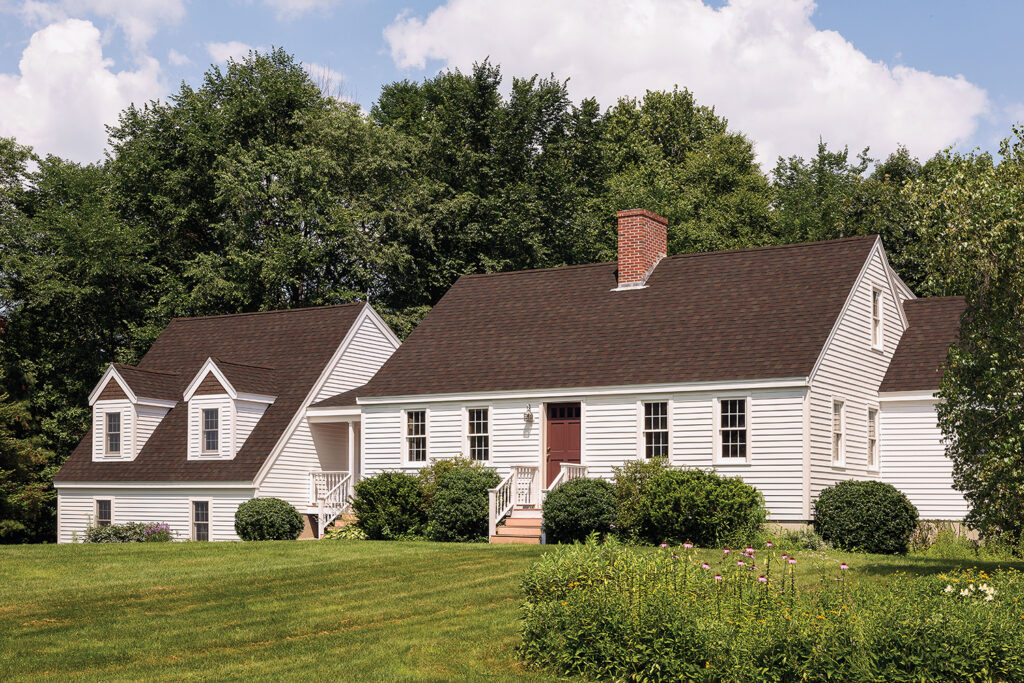How to Choose the Perfect Shingles for Your RooF
Choose the Right Type of Shingle
One of the first things you’ll have to decide is what type of shingles you want for your roof. Herb Lodde & Sons installs laminate roofing as well as cedar shakes and shingles.
If you prefer an asphalt-based shingle, it’s important to understand the differences between 3-tab and laminate shingles, two of the most popular kinds available for residential homeowners:
- Regular asphalt shingles (otherwise known as “3-tab” shingles) are flat with one shingle tab shape and size. They are lighter than laminate shingles; however the prices are typically comparable and 3-tab shingles are less durable over the long run.
- Architectural or laminate shingles are a type of asphalt shingle, but they’re built with a heavier base mat and a greater number of layers of more refined asphalt. The tabs have different sizes and shapes, which gives them a more dimensional appearance.
Select the Style of Shingle and Features That Will Be Best
Factors to take into account include:
- Appearance: How much dimension do you want your shingles to have? Architectural shingles are designed to provide a shadow effect that gives your roof an ultra-dimensional look.
- Algae Defence: If you live in an algae-prone area, look for shingles that feature built-in guards against discolouration.
- Fire Protection: To keep your home and everything in it safe, your shingles should have a Class A fire rating (the most effective against severe exposure)
Don’t forget to think about environmental conditions as well. If you live in an area that tends to get buffered by high winds or dumped with snow, your shingles need to be ready to stand up to the challenges Mother Nature has in store for them.

Factors That Impact the Type of Roof Shingle You Need
How much you’ll pay for various roof shingle materials and installation is only the tip of the iceberg. There are several key factors to consider deciding on the best roofing material for your home.
1. How Much Do Roof Shingles Cost?
Most homeowners pay between $4,700 and $10,460 for a new roof. When budgeting, keep in mind that the cost of installation and labor, as well as the cost of the material itself, will impact your bottom line. You’ll also need to account for the total square footage that your new shingles will cover. If you have a large roof area to cover, you might consider opting for cheaper materials.
2. What Is the Slope and Pitch of Your Roof?
Slope refers to how steep the angle of your roof is, and is normally measured with two numbers representing the rise, or height of your roof, and the run, representing it’s length. As an example, a slope of 4:12 indicates that a roof rises four feet and runs 12 feet. Depending on how steep the slope of your roof is, it may not be well suited for heavier roof shingle types, such as slate or clay tiles.
3. What Are the Weight Limits of Your Structure?
The weights of shingle materials vary widely. That’s why it’s important to know how much weight your home’s structure can safely support before making a decision. Buildings are designated a “dead load” tolerance, or the weight of the roof structure. If the dead load is exceeded, the structure will not be able to support its own weight. The average home has a dead load of around 15 pounds per square foot.

Facts and Tips on How to Pick Shingle Colors to Complement Your Home
More and more homeowners are adding value to their property – and lifestyle – by creating outdoor living spaces.
When it’s time to think outside the home, it’s time to include that new roof in your plans.
Wouldn’t you love to have an outdoor kitchen for al fresco cooking, dining and entertaining? Or a spa-like relaxation area complete with a pool, deck, hot tub or even a sauna?
See how much of your new roof will be visible from your backyard? Consider it an element of your exterior decorating!
Your roof can account for up to 40% of your home’s visual exterior, so it deserves as much consideration as you’d devote to its interior design.
The higher the pitch or the greater the slope of your roof, the more you’ll see the shingles from street level. When selecting your asphalt roofing shingles, choose a color and profile that will enhance your home’s architectural style and draw the eye upward toward any special details, like dormers and gables.
Color is too important a factor to ignore. Not only does it have a psychological effect (calming, soothing, exciting, etc.) on us, it can serve other purposes that we’ll explore more fully below.
Construction and building materials can also vary by geographic location. Here are two examples, and how they might affect choosing a shingle color for your roof. Brick homes are more prevalent in northern areas; in southern areas, frame or stucco homes tend to be more common. Other facings often used in both areas include masonry, stone veneer, wood logs, wood or vinyl siding.
Darker colors absorb heat; lighter colors reflect heat and may help keep your home cooler, although you have to take what some say about energy savings with a grain of salt. Adequate ventilation and the quality of your home’s insulation are what really determine its energy efficiency.
That said, colors that are highly reflective may be required in some states to meet environmental codes. A local roofing contractor will know if this applies and can guide you in selecting a shingle color.

These Points To Consider When Choosing A New Roof Color:
Look at what you have: Replacing your roof with the type of material you already have is generally safe, since builders typically choose the right material for a home’s architectural style, structural support, color palette and location, he said.
Consider climate: Shingle color can affect your home’s temperature and, depending on your insulation, energy bills. Black attracts and retains heat, making attics hotter. A lighter roof reflects the sun and keeps interiors cooler.
Factor in house colors: Red brick houses look nice with dark brown, deep gray or black shingles. Light gray houses look smart with dark gray roofs. Beige or cream houses work with brown, warm gray or even colored shingles. If you’re planning to change the color of your house, now is a good time to consider the whole palette.
Don’t make a statement: Your roof should not be the first feature folks notice. “A roof is meant to be in the background. A very dark roof will be more pronounced. A light roof will compete with the facade for attention, which is why mid tones are most popular.
Common Roofing Materials
Asphalt shingles
Asphalt shingles come in a variety of colors to choose from, have a relatively
low cost, are easy to install, and are durable enough to walk on without
causing damage.
Wood shakes
Wood shakes improve attic ventilation, and they’re beautiful and unique
looking. However, they can be difficult to install. Plus, mold and insects can
be a problem.
Clay tile
Clay tiles have a long life span, won’t burn or rot, and come in a variety of
colors to choose from. However, tile can be heavy, requiring extra roof
support. Plus, they’re fragile and more expensive.
Slate
Slate roofs can be laid out in a variety of patterns, provide fire protection,
and they’re not vulnerable to insects or rotting. At the same time, slate roofs
can be expensive, very heavy, and fragile.
Concrete tile
Concrete tiles are durable and have a long lifespan. Plus, they require low
maintenance, and can even imitate the look of wood, clay or slate. That being
said, the material may change color or curl, and they’re more expensive.
Metal
Metal roofs can imitate the look of clay, shingles, wood, or Victorian metal
tiles. They also provide fire protection, have a long lifespan, and require
fewer roofing repairs and maintenance. Not to mention the fact that they’re
energy efficient, too.
However, metal roofs are expensive and are challenging to install.
Hot asphalt
Asphalt flat roofs are less expensive and durable, but they’re not as
attractive as other materials.
Water damage can cost around $2,386 to fix, and wind damage costs an average of $5,757, though it